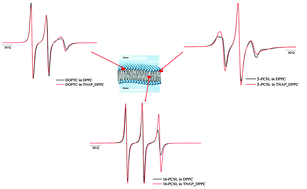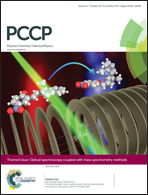Effects of GPI-anchored TNAP on the dynamic structure of model membranes
Abstract
Tissue-nonspecific alkaline phosphatase (TNAP) plays a crucial role during skeletal mineralization, and TNAP deficiency leads to the soft bone disease hypophosphatasia. TNAP is anchored to the external surface of the plasma membranes by means of a GPI (glycosylphosphatidylinositol) anchor. Membrane-anchored and solubilized TNAP displays different kinetic properties against physiological substrates, indicating that membrane anchoring influences the enzyme function. Here, we used Electron Spin Resonance (ESR) measurements along with spin labeled phospholipids to probe the possible dynamic changes prompted by the interaction of GPI-anchored TNAP with model membranes. The goal was to systematically analyze the ESR data in terms of line shape changes and of alterations in parameters such as rotational diffusion rates and order parameters obtained from non-linear least-squares simulations of the ESR spectra of probes incorporated into DPPC liposomes and proteoliposomes. Overall, the presence of TNAP increased the dynamics and decreased the ordering in the three distinct regions probed by the spin labeled lipids DOPTC (headgroup), and 5- and 16-PCSL (acyl chains). The largest change was observed for 16-PCSL, thus suggesting that GPI-anchored TNAP can give rise to long reaching modifications that could influence membrane processes halfway through the bilayer.


 Please wait while we load your content...
Please wait while we load your content...